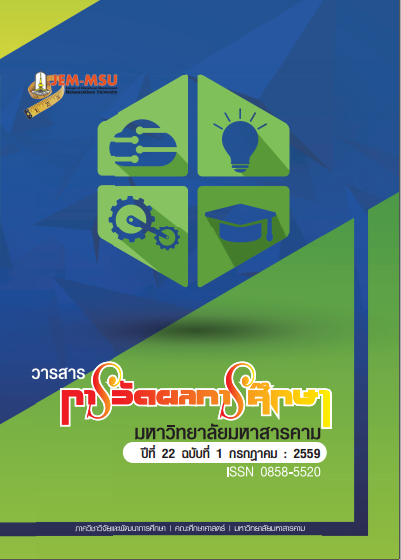Theory-driven Evaluation of Dual Vocational Training: Multilevel Structural Equation Modeling
Main Article Content
Abstract
Successful Dual Vocational Training programs will lead to quality of students in
three aspects: core competency, functional competency and students’ desirable
characteristics. The students must be knowledgeable, skilled in their work, understand how
to face problems and solve specific problems and work with others: their qualities will
include ethical conduct, attitude, habit of working properly and happily. Thus a program
theory for Dual Vocational Training (DVT), evaluated DVT management and investigated the
causal model factor effects on student quality. Data were collected by documenting and
structured interviews with 11 DVT on student quality. Data were collected by documenting
and structured interviews with 11 DVT experts, 140 Vocational Certificate students studying
in 4 schools and training in 34 enterprise, 10 supervisor teachers and 39 enterprise trainers.
Descriptive statistics and multilevel path analysis were used for quantitative data and
content analysis for qualitative data. Our DVT program theory shows who would be involved
in the DVT system and how to achieve the goals. The causal model consisted of ten
variables and met 70% of the evaluation criteria specified. The causal model factor was
found to match the empirical data. To achieve quality, stakeholders should follow the
program theory and focus on the variables that influence outcomes: the most important
was trainer quality.
Article Details
The content and information contained in the published article in the Journal of Educational Measurement Mahasarakham University represent the opinions and responsibilities of the authors directly. The editorial board of the journal is not necessarily in agreement with or responsible for any of the content.
The articles, data, content, images, etc. that have been published in the Journal of Educational Measurement Mahasarakham University are copyrighted by the journal. If any individual or organization wishes to reproduce or perform any actions involving the entirety or any part of the content, they must obtain written permission from the Journal of Educational Measurement Mahasarakham University.


